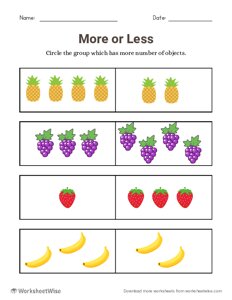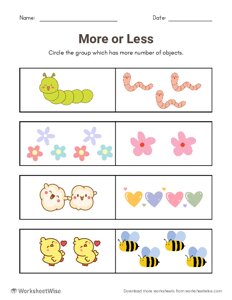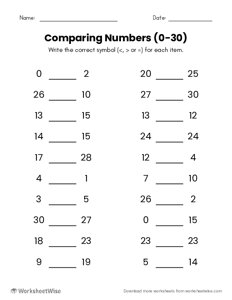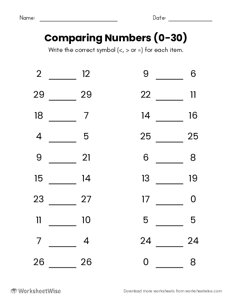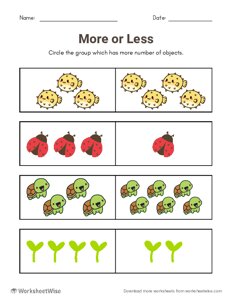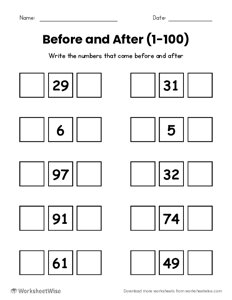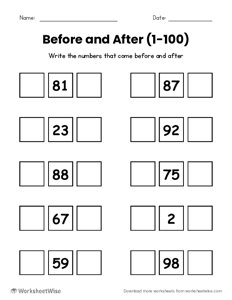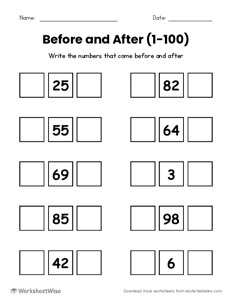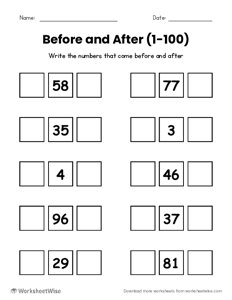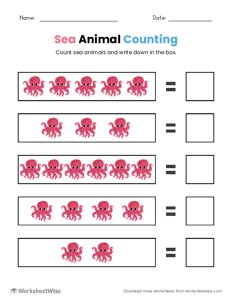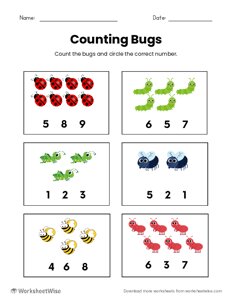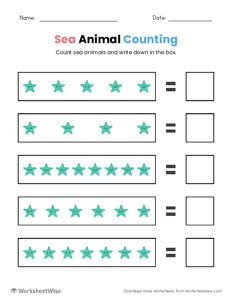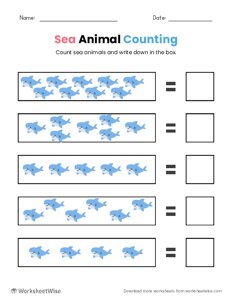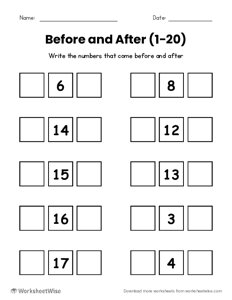Number Worksheets
Our free printable number worksheets help preschool and kindergarten students develop key early math skills. These worksheets introduce young learners to fundamental mathematical concepts and provide them with the hands-on practice they need to build confidence and proficiency.
Select a section to filter results:
More or Less
More or Less - 2
More or Less - 3
Comparing Numbers - 2
Comparing Numbers - 1
More or Less - 4
Before and After (1-100) - #1
Before and After (1-100) - #2
Before and After (1-100) - #5
Before and After (1-100) - #4
Sea Animal Counting - Octopus
Counting Bugs
Sea Animal Counting - Starfish
Sea Animal Counting - Fish
Before and After (1-20) - #4
Free Printable Number Worksheets
Here's a deeper dive into the types of worksheets for Preschool and Kindergarten students:
Counting
Children learn to count objects in various contexts, like counting fish, blocks, bugs, ocean animals, and more. Activities include counting to 5, 10, 20, or higher.
Before and After
These worksheets focus on the concept of number sequencing and number order. Students will learn to recognize the position of numbers in a sequence.
Count and Match
Match groups of objects with the correct number. Help them practice counting and number recognition. Matching exercises support the development of logical reasoning, as students need to analyze which number corresponds to each group.
Even and Odd
These worksheets help children understand the difference between numbers that can be divided evenly by two (even numbers) and those that cannot (odd numbers). They can sort or identify even and odd numbers.
Fact Family
Fact family worksheets explore the relationship between addition and subtraction within a set of three numbers.
More or Less
Compare numbers by determining which number is greater or smaller. By using simple symbols like < (less than) or > (greater than), children learn to compare numbers based on their value.
Missing Numbers
Identify numbers that are missing in a sequence. For example, given the sequence 1, 2, __, 4, children must recognize the missing number (in this case, 3).
Number Bonds
Number bonds are pairs of numbers that make up a certain total. For instance, the number bond for 6 includes the pairs 2 and 4, 3 and 3. Help them understand addition and subtraction and how numbers can be combined to form a total.
Number Charts
Number charts help children visualize numbers and their relationships in a grid format. They can be used to practice counting by ones, twos, fives, or tens. Number charts are also helpful for learning skip counting, recognizing number patterns, and locating numbers within a set range.
Hundreds Chart
A hundreds chart helps young learners explore numbers from 1 to 100. This chart helps children understand counting patterns, such as counting by tens, recognizing number relationships, and identifying numbers above and below a given number.
Number Comparing
Compare two numbers to understand the concepts of "greater than," "less than," and "equal to." In these worksheets, children are given pairs of numbers and asked to identify which number is larger or smaller or if the two numbers are the same.
Ten Frames
Grasp the concept of numbers in relation to groups of 10. Fill in a ten-frame grid with a specific number of objects or dots. These worksheets help children understand place value as they learn to recognize that numbers are made up of tens and ones.
Place Value: Tens and Ones
Introduce young learners to the concept of place value and teach them how numbers can be broken down into tens and ones. For example, in the number 23, there are two tens and three ones.
Number Tracing
Practice forming numbers and develop fine motor skills. Children trace over the dotted numbers to learn the correct shape and formation of each numeral.
Ordinal Numbers
Learn about Ordinal numbers. These numbers indicate the position or order of items in a list or sequence. They tell us which place an item occupies, rather than the quantity of items.
Download and print these worksheets for supplemental practice or as part of a structured learning program.
